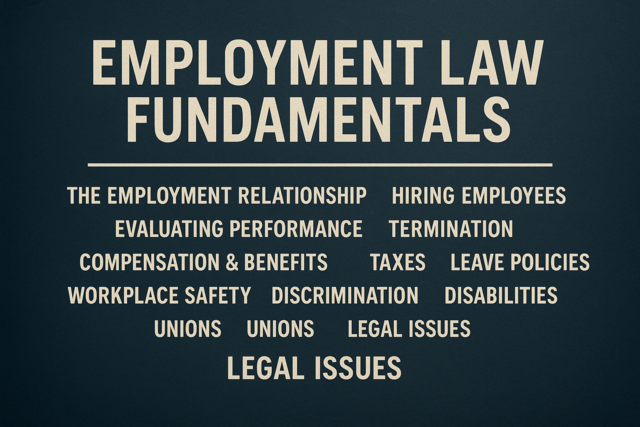INTRODUCTION
Consultants can help an organization by first defining the term Quality in the context of an organization. We can see how the International Standards Organization defines Quality as characteristics and features that satisfy needs. This applies to a product or service with needs being stated or implied. In other words, a quality product does what the client expects and/or specifies.
Consultants can also explain the quality management can help an organization to create and deliver a product or service that has consistently good quality. Elements of quality management include:
-
Quality assurance
-
Quality control
-
Quality improvement
-
Quality planning
We focus not just on the end product or service. We also focus on how we achieve this end consistently and reliably. Process is part of the approach to achieve the end.
Here is a summary of key terms.
-
Quality assurance involves actions that are systemic and/or planned. These actions have a focus on looking at products so a group is sure they satisfy requirements
-
Quality control is an effort that is ongoing. Here we try to maintain a process so the result is reliable and consistent.
-
Quality improvement is the change to a process that improves the end result.
A SHORT HISTORY CAN HELP
Consultants can provide information on this history of quality to better explain its importance to organizations.
The creation of an assembly line to produce a consistent end product was one of the first approaches to quality as we know it today. Henry Ford used this approach in the processes used on his assembly lines for cars. After World War II Volkswagon used mass production using similar approaches. In the United States we saw a focus more on low cost and efficiency during this period. Edwards Deming used methods during World War II to improve quality of products. After World War II leadership at companies in Japan worked with people such as Deming and Juran to improve the quality of their products and also rebuild their economy.
Japan used ideas such as the following to improve quality and productivity and become more competitive globally.
1. Management should help workers
2. Management should break down barriers within organizations and departments
3. Constant improvement should be part of processes
4. Education should be important to every job
Instead of producing low quality goods companies in Japan used quality approaches to improve quality. This started in the 1950s and by 1970 the quality of Japanese products improved. We see this in particular with the quality of Japanese cars including Honda and Toyota. Customer satisfaction was high when we looked at ratings from groups such as Consumer Reports and J.D. Power and sales of these products increased.
Due to customer demands companies in the U.S. started quality programs to keep up with Japanese manufacturers. In particular, Ford Motor Company did this in the 1980s working with Deming.
ISO STANDARDS AND QUALITY MANAGEMENT
The consultant can work with an organization to evaluate if standards from the International Standards Organization (ISO) can apply to improve their situation. A consultant can even help a group get ISO certification or at least pick the ideas from ISO principles that can help including the well known ISO 9000 series of standards relating to quality management. We can apply these principles to many groups including:
-
Industrial applications
-
Academia
-
Sales
-
Marketing
-
Customer service
-
Health care
Here are some of the ideas a consultant can use from ISO documentation to help a group improve quality and performance.
2. Focus on improvement � When an organization has such a focus the end product will most likely be of high quality. This is how an organization will continue to evolve and change for the better as conditions change.
4. Have leadership work together to create the right conditions for the organization � These conditions include engagement of workers. At all levels leadership and management should create policies, procedures, and processes to work toward the objectives of the organization to serve the customer.
5. Take a process approach � When management looks at how processes interact the end result should improve. This is how you create an end result with a consistently high quality. This systems approach can improve a groups performance and create a better result.
6. Use data to make decisions � When an organization has a focus on the use of analysis to make decisions the end product will more likely be of a high quality. If a group attempts to make decisions that are less subjective the group will benefit.
7. Consider supplier quality � It is more likely that a group will create a quality product if suppliers also have a quality focus.
QUALITY MANAGEMENT TECHNIQUES � HOW TO GUIDE
Here is a list of methods and techniques that a consultant can use to explain quality concepts and which can apply to an organization.
ISO Standards
Consultants can explain about these ISO standards and provide clients with a copy of the documents.
-
ISO 9004: 2008 provides guidelines on performance improvement.
-
ISO 9001: 2015 provides specifications and information on a quality management system (QMS) that is certified by a third party that comes to the organization and performs an audit. By following the documentation a group can prove that they are able to meet the needs of users and stakeholders with quality products and services.
Consultants can also make clients aware of these quality concepts and programs.
-
Kaizen � This Japanese term in English means continuous improvement and relates to change for the better.
-
PDCA � A mnemonic for plan, do, check, act � the term reflects a cycle for a process that produces a quality result
-
Six Sigma � This approach helps groups improve quality and reduce defects using techniques such as failure mode and effects analysis.
-
DMAIC � A mnemonic for define, measure, analyze, improve, control, DMAIC relates to Six Sigma and the method of producing a quality result.
-
Quality circle - Meaning improvement through a group or circle of people, this approach emphasizes that people who do the work can best provide input on how to improve processes and products.
-
TQM � An abbreviation for Total Quality Management, this strategy involves making all levels of an organization aware of quality.
-
Zero Defects - This program was developed in Japan and can be related to Six Sigma.
Applications for these concepts in many cases began with manufacturing approaches. Today they have been extended to service groups, academia, and health care.
Consultants can also explain what could work best for a client. Culture can play a role here too. It takes time for management and all levels to accept a change and have it gain acceptance, then show results. Consultants can help with this process. Small and incremental changes can also work best as we have seen in Japan and the use of Kaizen. The small changes can add up to a transformation as we saw with Japan and how cars improved in quality over time. Eventually, the Japanese economy overall also grew stronger.
If a consultant comes in at a time of crisis for a group, this can be an opportunity for change. A consultant can take into account the reasons for the crisis and which methods could work best for the particular issues and goals.
MORE ABOUT STANDARDS
Here is a list with more information about standards. Consultants can pass on related information to their clients as appropriate.
1. Organizations in over 100 countries have received ISO certification.
2. The basic standard is ISO 9001:2000 while ISO 9004: 2009 provides additional guidelines for quality improvement. The guidelines cover additional information about improved management and process assessment.
3. When you are certified you are evaluated on process and not the product or service provided.
4. ISO 22000 covers the food industry.
5. ISO 9001: 2008 covers the automobile industry.
6. CMMI is a standard developed by the Software Engineering Institute and refers to the Capability Maturity Model. It covers improvement methods and process assessment.
If Capability Maturity Model Integration (CMMI) is a good fit for an organization, the consultant can relay this information about CMMI to the client.
1. CMMI deals with training for process improvement.
2. It also covers an appraisal program.
3. Carnegie Mellon University is involved in marketing CMMI.
4. The Department of Defense and other US government agencies require CMMI.
5. CMMI can assist with improvements in an organization or part of it such as a division or even a project.
Using CMMI processes are rated as follow as related to maturity.
1. Initial
2. Managed
3. Defined
4. Quantitatively managed
5. Optimizing
CMMI models include:
-
CMMI for services
-
CMMI for acquisition
-
CMMI for development
AWARDS RELATED TO QUALITY
Here is a list of some of the awards related to quality.
1. Deming Award � a Japanese award for quality management
2. UK Excellent Award
3. European Foundation for Quality Management Award
4. Malcolm Baldrige Awards � a U.S. award for performance quality
The Baldrige awards go to U.S. organizations. These organizations can be in the for profit or non profit sector. It covers all sectors including education, health care, and business. Categories include:
-
Manufacturing
-
Service
-
Small business
-
Education
-
Health care
-
Nonprofit
The President of the United States gives the award. The United States Department of Commerce administers the award through the National Institute of Standards and Technology. To win a Baldrige award an organization must:
-
Be willing to share information about their strategies
-
Have a management system involving continuous improvement
-
Demonstrate effective operation
-
Respond to customers and stakeholders
Consultants can provide information about past winners and even contact winners to get ideas for improvement. Here is a list of some of the winners.
Charter School of San Diego
Charleston Area Medical Center Health System
Mid America Transplant Services
PricewaterhouseCoopers
Hill Country Memorial
In evaluating an organization, the award looks at:
-
Criteria for performance excellence
-
Core values and concepts
-
Scoring guidelines
In evaluating organizations Baldrige attempts to:
-
Identify winners who can be future role models
-
Help groups identify strengths and weaknesses. evaluate improvement efforts, and report on their management system
The core values Baldrige reflects include ethics, transparency, delivery of value and results, management by fact, a focus on success, organizational agility, valuing people, a systems perspective, and a customer focus.
Criteria reflect seven aspects of management and performance.
1. Customers
2. Leadership
3. Strategy
4. Measuring, analysis, and knowledge management
5. Operations
6. Workforce
7. Results
SOFTWARE THAT HELPS WITH ORGANIZATIONAL QUALITY MANAGEMENT
Consultants can provide information to clients about quality management software. These products can help an organization manage delivery of products that are of a high quality.
The software can assist with:
-
Compliance management
-
Inventory issues
-
Audit management
-
Preventive action plans
-
Non conformance management
-
Supplier quality
-
Risk management
-
Failure mode and effects analysis
-
Complaint handling
-
Hazard analysis
-
An approval process for production parts
Enterprise resource planning (ERP) software is one approach. It can include a number of applications used to interpret, collect, and store data. This can include data concerning the following in addition to quality:
-
Inventories
-
Product planning
-
Purchases
-
Products
-
Financials
An ERP can be a big financial commitment for an organization. Some of the vendors providing ERP software include Oracle and SAP. Consultants can provide an overview of what is available and what would work for a client plus how quality can be included in the software package.
CONCLUSION AND SUMMARY
We have now looked at the role a consultant can play with regard to providing information to clients on quality and how they can help a client with implementation of a quality system or parts of a system. Some of the topics we covered included a short history on quality management, a standards overview, awards related to quality, and software that can help with quality management.































